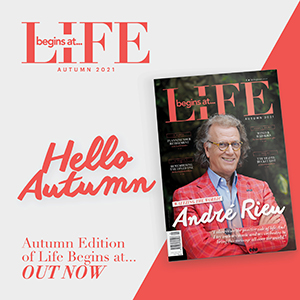Interest in art as an alternative asset class has gained momentum in recent years writes Raj Nanda.

2012 oil on canvas 182.8 x 152.5cm (Image courtesy the
artist and Art Equity)
Investors have been buying art as a way of diversifying and insulating against economic volatility in shares and property. There have also been numerous studies released by major international financial institutions that show that over a longer-term horizon art has not only equalled or outperformed the equities markets, but also has lower volatility and is largely uncorrelated to the share market. Does this mean that we should all jump in and hold art as 100 per cent of our portfolios? The answer of course is ‘no’. However, art can provide diversity and should be part of a well-diversified asset portfolio.
The art market is broken into the Primary Market (private sales through galleries, art dealers and private individuals) and the Secondary Market (auction sales). When people talk about the size of the art market they are generally referring to the (tracked) latter category.
Artists can be broadly categorised into three categories: blue-chip (those with significant auction records and prices), mid-career (those that have a long professional career and recognition through prizes and collections) and emerging artists (those generally still to gain recognition and usually without auction history).
How should one begin investing in the art market?
You should go about by educating yourself. Start by doing research prior to dipping your toe into the market. The internet is a good place to see what artists are doing, follow exhibitions, track prizes and auction records. The best way to start is to do research on art and artists that interest you. It pays to spend time wandering through private galleries, going to national and state galleries, attending exhibitions, subscribing to newsletters to see what is happening in the art market and tracking auction results. It is also worthwhile speaking to art advisers and art dealers to seek their help.

122×96.5cm (Image courtesy the artist and Art Equity)
It is also possible to earn an income stream from your art portfolio. Companies such as Art Equity specialise in getting your works into corporate spaces where your art can earn you an income.
When starting out it is best to have a budget in mind. You can then narrow this to artists and type of art that interests you. A golden rule of investing is to buy the best quality in the budget you have set. Emerging artists may seem cheap for investors to dip their toe into the market, however they will also carry more risk than investing in blue-chip artists. One common mistake some investors make is to chase a signature. Not all paintings by artists are necessarily going to be good. The big thing for investors to get their head around is an element of subjectivity and what makes one painting better than another one. Again – ask questions and do your research! Just like the stock market, the art market will have categories within the market such aboriginal art or contemporary art which performance differently.
In considering art investment, establishing your personal risk profile based on artist categories listed above, investment horizon and strategies are key. There are also all indices such as the Mei Moses Art Index that track the art market. It is also worthwhile looking at sites such as Australian Art Sales Digest and Art Price to see how artists and the market is performing. Again this will largely cover the secondary market sales.
Remember the golden rule – the investment lies in quality.
What should you buy? The number one rule of art investing is buy what you love. Whether you consider yourself more of a profit driven art investor or aesthetically driven art collector buying something you like should always be part of your decision making process as it is a major part of the pleasure of art ownership. Blindly following art world fashions can lead to disappointment.

106.5x122cm (Image courtesy the artist and Art Equity)
When you purchase an artwork you are investing in more than just canvas. The demand for an artist’s work is likely to increase based on factors such as recent media coverage, the collections they are in, the artist winning key prizes, books being published on the artist, retrospectives and exhibitions and interest from international buyers.
It makes good sense to do your research to make sure you are getting a good price. Knowledge is power and you will be better in a better position to negotiate a price if you can point to historical figures. Artists with strong secondary market auction results are likely to provide greater liquidity than those with lesser or no auction records should you need to sell in a hurry. Artists with substantial CV’s such as John Olsen and Jeffrey Smart will also tend to attract the larger buyers. However, relying purely on auction prices can also be dangerous as sometimes bidding wars between interested parties can mean that prices are artificially increased for such artists.
“The number one rule of art investing is buy what you love. Whether you consider yourself more of a profit driven art investor or aesthetically driven art collector buying something you like should always be part of your decision making process as it is a major part of the pleasure of art ownership.”
Which artists are currently worth considering?

2013, Acrylic on linen, 83x183cm
(Image courtesy the artist and Art Equity)
It is worthwhile considering Archibald finalist artists such as Alan Jones and Giles Alexander who have also held successful solo exhibitions. Chinese-born Hobart resident Chen Ping has enjoyed enormous success in the last few years with shows in New York, Hong Kong, Beijing, LA, and Sydney. Multiple Archibald Prize finalist, Chinese-born Sydney artist Adam Chang, is another artist to consider and he is also being courted by his native market in China.
The Aboriginal art market has been much maligned in recent years, with over production and dubious practices in the market. Provenance, quality and pricing are key aspects to contemplate. Top Indigenous artists are still worth considering and the current soft market can present some good purchasing opportunities for the well informed collector. Works by artists like Bill Whiskey Tjapaltjarri, Tommy Watson, Wentja Morgan Napaltjarri and Nyurapayia Nampitjinpa (Mrs Bennett) have maintained strong interest.
Remember, when you start your journey into art investing, enjoy the process, have fun and it can become addictive very quickly!
 | Raj Nanda ART EQUITY Raj Nanda is director and Chief Executive Officer, Art Equity. Art Equity is an Australian investment art gallery and advisory firm that provides innovative investment solutions to clients around the world. Art Equity combines expertise in art, art education and structured investments to offer opportunities for clients to build wealth and personal enrichment from art. The company also represent leading emerging and mid-career contemporary Australian, Indigenous and international artists and has offices in Singapore and London. |





















Add Comment